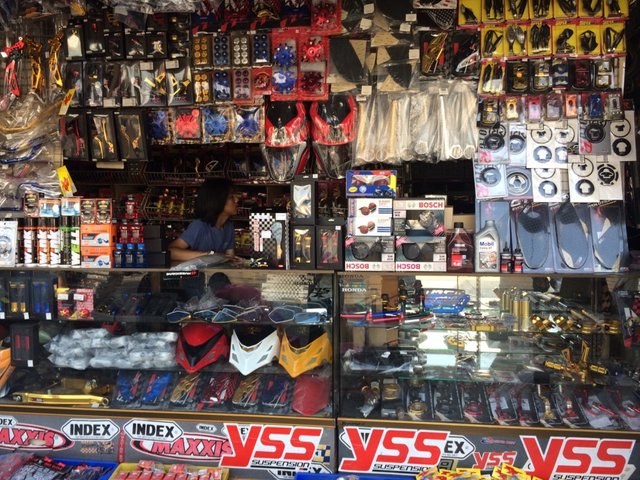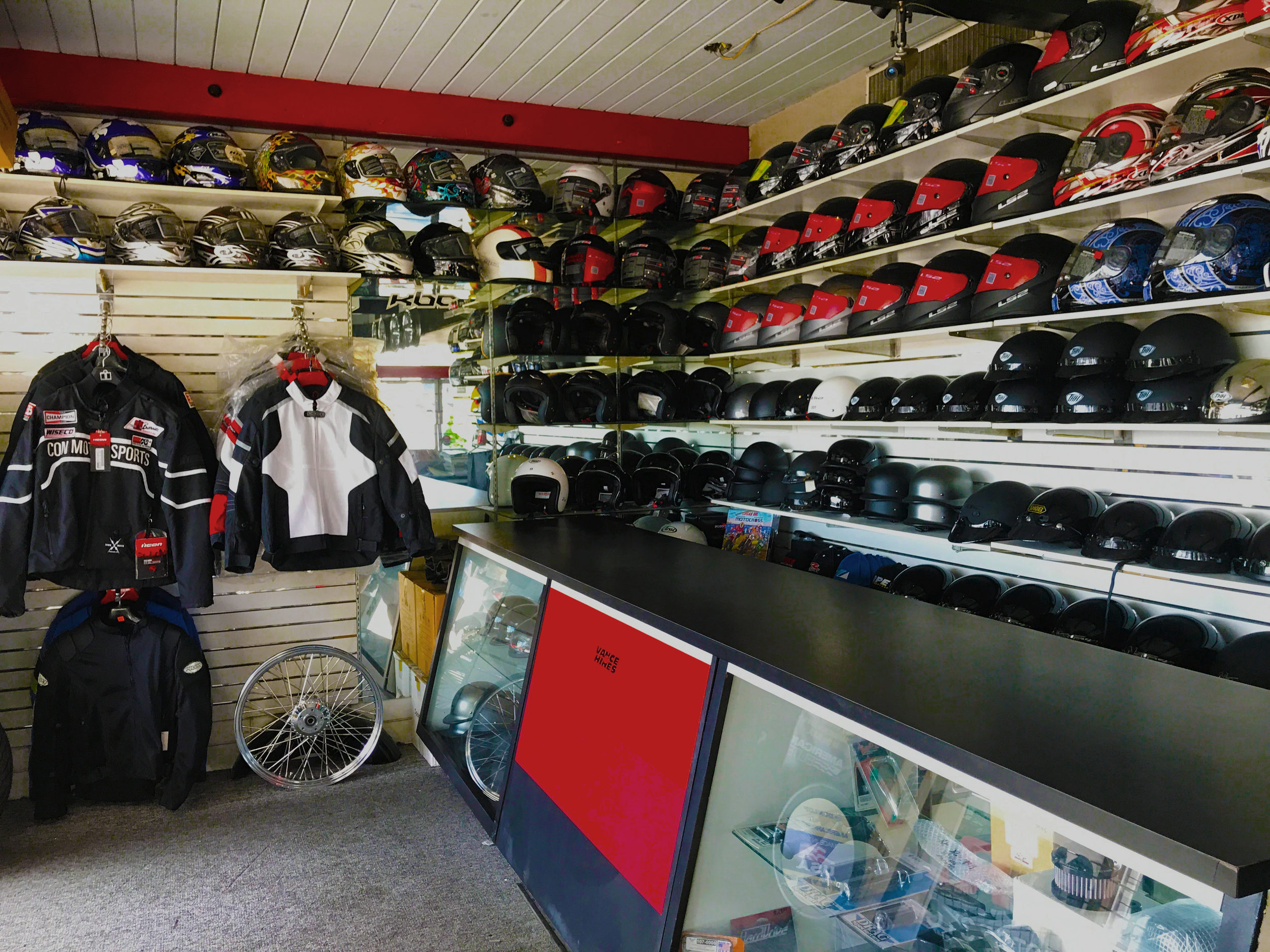Recognizing the Important Parts of a Motorcycle: A Comprehensive Overview for Lovers
For bike fanatics looking to raise their riding experience and guarantee their bikes run efficiently, recognizing the essential elements of a motorbike is vital. Each aspect, from the engine's detailed functions to the crucial duty of the braking mechanisms, not just impacts efficiency but also safety and comfort. This overview will certainly walk with the fundamental components that every motorcyclist need to recognize with, allowing informed choices in both upkeep and potential upgrades. As we begin this expedition, one must ask: just how does each part engage to produce the smooth ride every lover seeks?
Engine Parts

The camshaft plays a critical duty in managing the timing of the engine's shutoffs, guaranteeing the specific opening and closing essential for effective fuel and air consumption, along with exhaust expulsion. This timing is essential to keeping ideal engine efficiency and effectiveness. Additionally, the carburetor or gas injection system, depending on the motorcycle design, is accountable for mixing air with fuel in the proper ratio for burning.
The cooling system, either air or liquid-based, works to preserve the engine's temperature level within operational limits, preventing getting too hot and making certain long life - motocross parts nz. Each component, carefully developed and integrated, adds to the smooth operation of the engine, specifying the motorbike's power result and general performance
Transmission System
Indispensable to the motorcycle's performance, the transmission system makes certain efficient power transfer from the engine to the wheels. This system makes up several vital components, including the clutch, transmission, and final drive, each playing a vital role in converting the engine's power right into activity. The clutch, usually run by a hand bar, serves to engage and disengage the engine from the transmission, enabling smooth gear modifications and controlled velocity.
The gearbox, frequently described as the transmission correct, contains a collection of gears that cyclists can by hand move via to readjust the bike's rate and torque result. These equipments are prepared in a sequence that enables the motorcycle to increase smoothly and maintain optimum engine performance across numerous rates. Most bikes make use of a sequential transmission, requiring the cyclist to shift equipments in an established order.
Braking Devices
While comprehending the transmission system is vital to utilizing a bike's power, equally crucial is the ability to control and quit that power successfully, which is where stopping mechanisms enter play. Brakes are important for security and efficiency, giving the cyclist with the required control to browse numerous surfaces and conditions. Normally, bikes include 2 kinds of stopping systems: disc brakes and drum brakes.
Disc brakes are more widespread in contemporary motorcycles due to their superior efficiency. This system uses better warmth dissipation, regular performance, and enhanced stopping power, specifically in damp problems.
Alternatively, drum brakes, though much less typical, are still found in some bikes. They function by pushing brake footwear versus the inner surface area of a drum attached to the wheel. While normally much less reliable in warmth dissipation and stopping power, drum brakes are less complex and a lot more affordable.
Recognizing these stopping systems' nuances permits motorcyclists to maintain their motorcycles correctly and appreciate the design that makes certain efficient and safe stopping.
Suspension and Steering
Suspension and guiding systems are essential parts that significantly affect a motorbike's handling and experience convenience. The suspension system, including forks at the front and shock absorbers at the rear, soaks up road abnormalities, boosting stability and control. Front forks, upside down or usually telescopic, compress and rebound to reduce impacts, while back shock absorbers keep tire contact with the road, critical for grip and safety.
Steering, focused around the handlebars, links the biker to the motorcycle's directional control. The steering head bearings make sure smooth procedure, allowing precise ability to move. Appropriate positioning and maintenance of these bearings are vital for predictable steering action and minimizing rider fatigue.
The suspension's adjustability is an additional crucial element; preload, damping, and rebound settings enable customization to match different riding styles and problems. This adaptability is crucial for enhancing efficiency, whether browsing city roads or tackling rugged tracks. Innovations like digital shock absorber supply real-time adjustments, improving trip top quality across diverse terrains.

Electrical Equipments
After guaranteeing a controlled and smooth trip through efficient suspension and guiding systems, attention turns to the electric systems, a pivotal aspect of modern motorbikes. These systems play a critical function not just in beginning the engine however also in powering different parts that boost the performance and security of the motorbike.
At the heart of a motorcycle's electrical system is the battery, which shops electrical energy required for beginning the engine and powering supporting systems - motox parts nz. The alternator or generator, paired with the rectifier-regulator, ensures the battery remains charged while the motorcycle is in operation, transforming power right into electric energy and maintaining voltage levels
The ignition system, another important part, is in charge of sparking the air-fuel mix in the engine's cyndrical tubes. Modern motorcycles commonly utilize an electronic ignition system, providing greater efficiency and reliability compared to traditional systems.
Lights systems, consisting of fronts lights, tail lights, and indications, are additionally crucial, making certain visibility and safety and security for the cyclist. Additional electronic components such as sensors, control units, and presents add to advanced features like fuel shot management, anti-lock stopping advice systems (ABDOMINAL MUSCLE), and electronic control panels, better boosting the riding experience.
Final Thought
A detailed understanding of a motorcycle's important components, including the engine, transmission system, braking mechanisms, suspension, steering, and electric systems, is important for fanatics aiming to enhance comfort, efficiency, and security. Proficiency of these aspects enables for informed choices pertaining to maintenance and upgrades, ultimately boosting the riding experience. By integrating this knowledge, riders can guarantee their bikes operate at peak efficiency and dependability, consequently taking full advantage of both enjoyment and long life of their cars.
For bike enthusiasts looking to elevate their riding experience and ensure their bikes run efficiently, comprehending the important parts of a motorcycle is extremely important.Essential to the motorcycle's capability, the transmission system makes certain efficient power transfer from the engine to the wheels.While recognizing the transmission system is vital to using a bike's power, equally crucial is the capacity to control blog and quit read what he said that power effectively, which is where stopping systems come right into play. Commonly, motorbikes include two types of stopping systems: disc brakes and drum brakes.
A complete comprehension of a motorcycle's essential components, consisting of the engine, transmission system, stopping devices, suspension, guiding, and electrical systems, is vital for enthusiasts aiming to optimize safety and security, performance, and convenience.